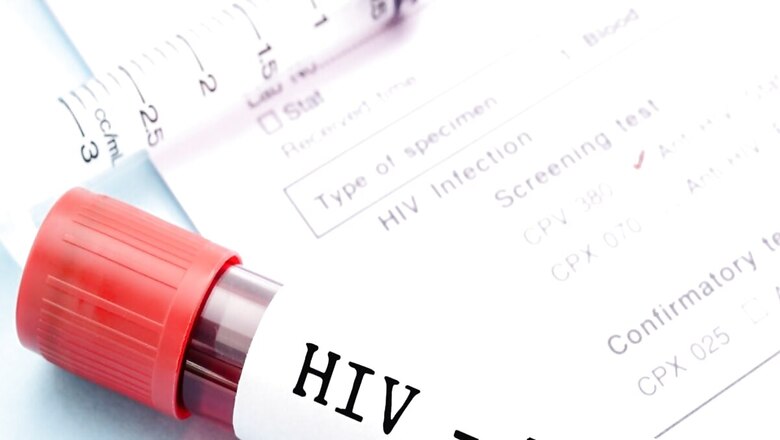
views
In this article, we will explain facts about how HIV is transmitted and debunk the myths related to HIV and kissing.
You’ve probably heard this myth before that HIV can be transmitted through kissing. This idea has perpetuated fear and stigma since the early days of the HIV epidemic. However, it’s simply not true. HIV is not spread through saliva, and open-mouth kissing with an HIV-positive partner does not put you at risk of infection. While HIV can be transmitted through certain bodily fluids like blood, semen, vaginal fluids, and breast milk, saliva is not one of them. Scientific evidence has conclusively proven that HIV cannot be passed on through kissing. It’s time to debunk this myth once and for all and help end the stigma around HIV.
What Is HIV and How Is It Transmitted?
HIV stands for human immunodeficiency virus. It’s a virus that attacks the immune system, the body’s natural defence against illness. HIV is transmitted through direct contact of bodily fluids like blood, semen, vaginal fluids, and breast milk from an infected person to an uninfected one.
The virus needs a direct entry into the bloodstream to infect someone, and it cannot survive long outside the human body. Deep kissing where large amounts of saliva are exchanged is considered a very low risk for HIV transmission. However, if the person with HIV has mouth sores or bleeding gums and blood is present, the risk increases slightly.
Can You Get HIV From Kissing?
The short answer is no, HIV cannot be transmitted through kissing. HIV, the virus that causes AIDS, is spread through direct contact of bodily fluids like blood, semen, vaginal fluids, and breast milk from an infected person. Saliva alone does not contain enough HIV to transmit the virus.
HIV is a fragile virus and cannot survive long outside the body. It needs certain conditions to stay alive, like body temperature and humidity. Once saliva leaves the mouth, the virus quickly dies due to changes in temperature and exposure to oxygen. For infection to occur, HIV-infected fluids must come into contact with a mucous membrane or damaged tissue, such as in the anus, vagina, or injection site. The surface of the lips and inside of the mouth do not provide the necessary conditions for the virus to enter the bloodstream.
To be infected with HIV through kissing, an HIV-positive person’s mouth would have to be bleeding at the same time the kiss was occurring, and their blood would have to come into direct contact with the other person’s bloodstream or mucous membranes like those in the mouth, genitals or rectum. The likelihood of these events occurring during casual kissing is extremely small. For infection to take place, a large amount of blood would need to be exchanged, which is very unlikely during open-mouth kissing. The saliva of an HIV-positive person may contain small amounts of HIV, but saliva inhibits the virus and prevents it from infecting new cells.
Tips for Reducing Your Risk of HIV Infection
To reduce your risk of HIV infection, there are some prudent steps you can take
- Practice Safer Sex: Use protection like condoms, dental dams and gloves during any type of sexual activity. Condoms are highly effective at preventing HIV when used correctly every time you have sex.
- Limit Sexual Partners: The more partners you have, the higher your chances of encountering someone with HIV. Try sticking with one trusted partner or limiting new partners. Get tested regularly if you do have multiple partners.
- Don’t Share Needles: Sharing needles or syringes to inject drugs is an extremely high-risk activity. Use only sterile needles and never share with others. Needle exchange programs can provide clean needles.
- Get Tested: The only way to know for sure if you or a partner has HIV is to get tested. Everyone between the ages of 13 to 64 should get routine HIV testing at least once. Those at higher risk should get tested more frequently. Early diagnosis and treatment is critical to managing HIV.
- Avoid Alcohol and Drugs: Substances can impair your judgement and reduce your ability to practice safer sex. Use it in moderation or avoid it altogether to make the best decisions about your health and your partners.
- Consider PrEP: For those at high risk of HIV, pre-exposure prophylaxis or PrEP involves taking antiretroviral drugs daily to reduce the risk of infection. When taken as prescribed, PrEP can lower the chances of getting HIV from sex by over 90 per cent and from injection drug use by over 70 per cent. Talk to your doctor about your options.
Following these tips can help reduce your risk of acquiring HIV so you can maintain your health and the health of your partners. But remember, HIV testing is the only way to confirm your status and get connected with treatment if needed. Make getting tested a regular part of your self-care routine.
While the risk of getting HIV from kissing is negligible, it’s still a good idea to avoid kissing someone if either of you has bleeding gums, sores, or other breaks in the skin or lining of the mouth. Safer sex precautions like using condoms, dental dams, and gloves can further reduce the risk of HIV transmission during any sexual activity. But if you’ve been worrying all this time about catching HIV from a casual kiss, you can now debunk that myth and pucker up with confidence. The facts show there’s no need to panic over a little kiss. HIV remains a virus that is challenging to transmit, and it certainly can’t be spread through normal, everyday acts of intimacy like sharing a kiss.

















Comments
0 comment